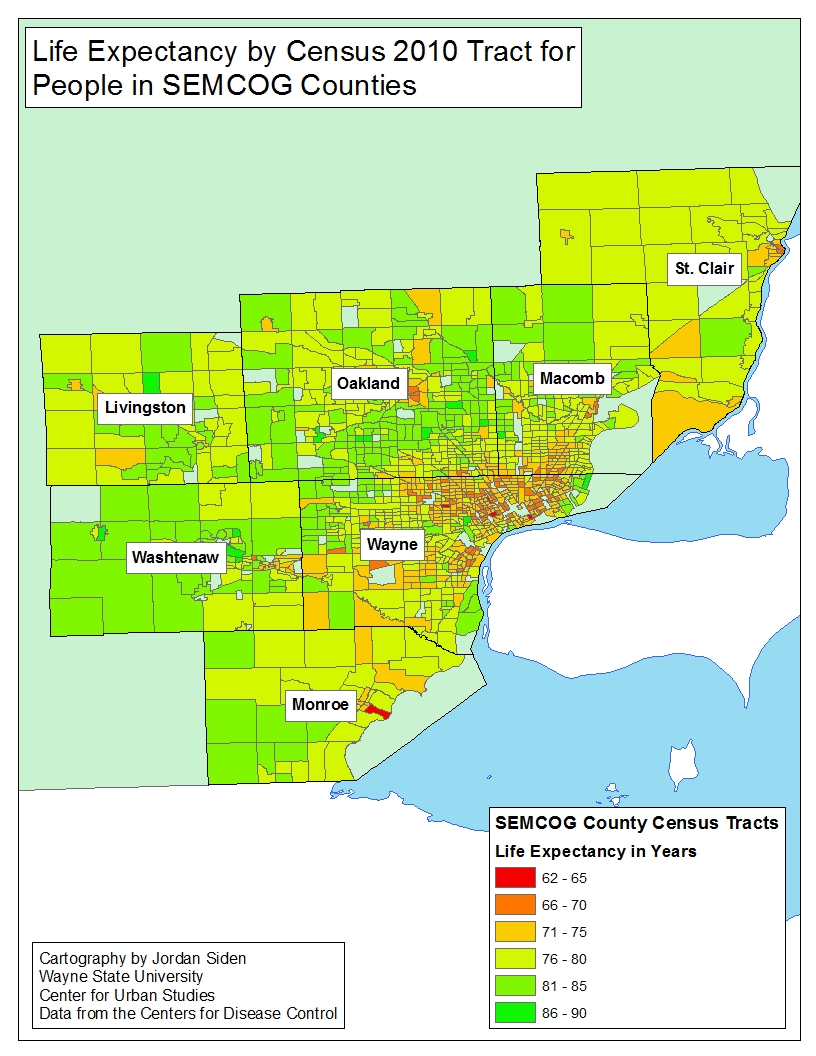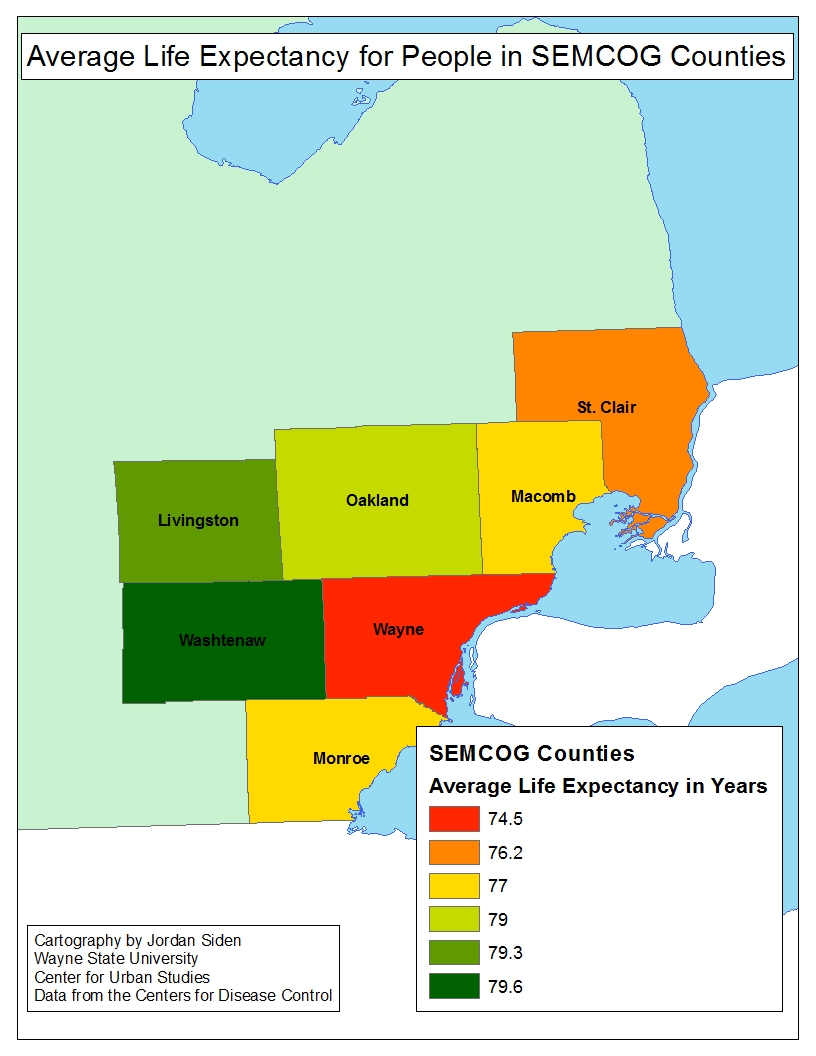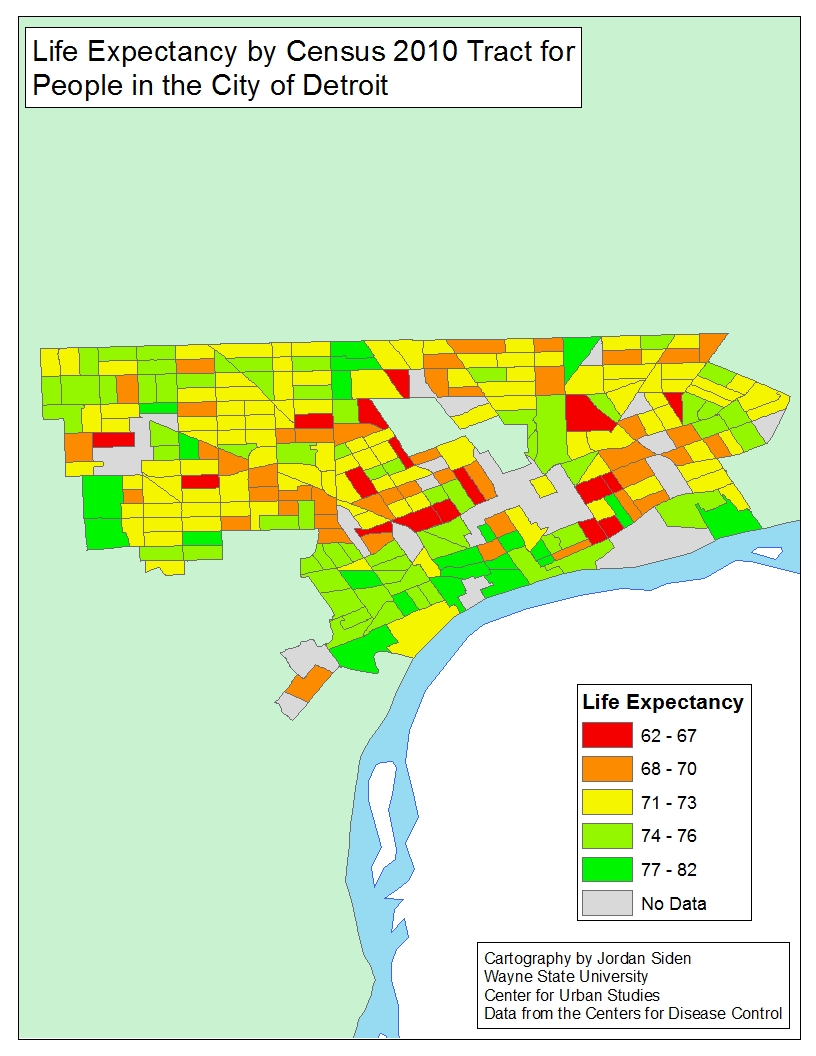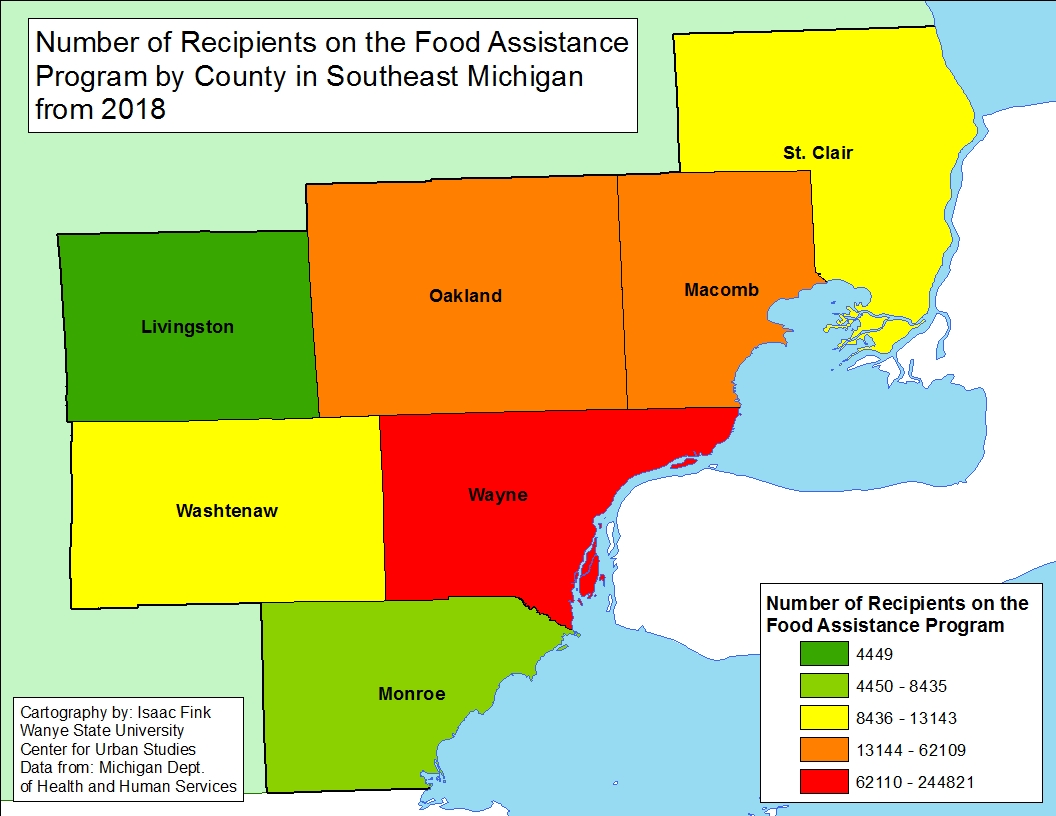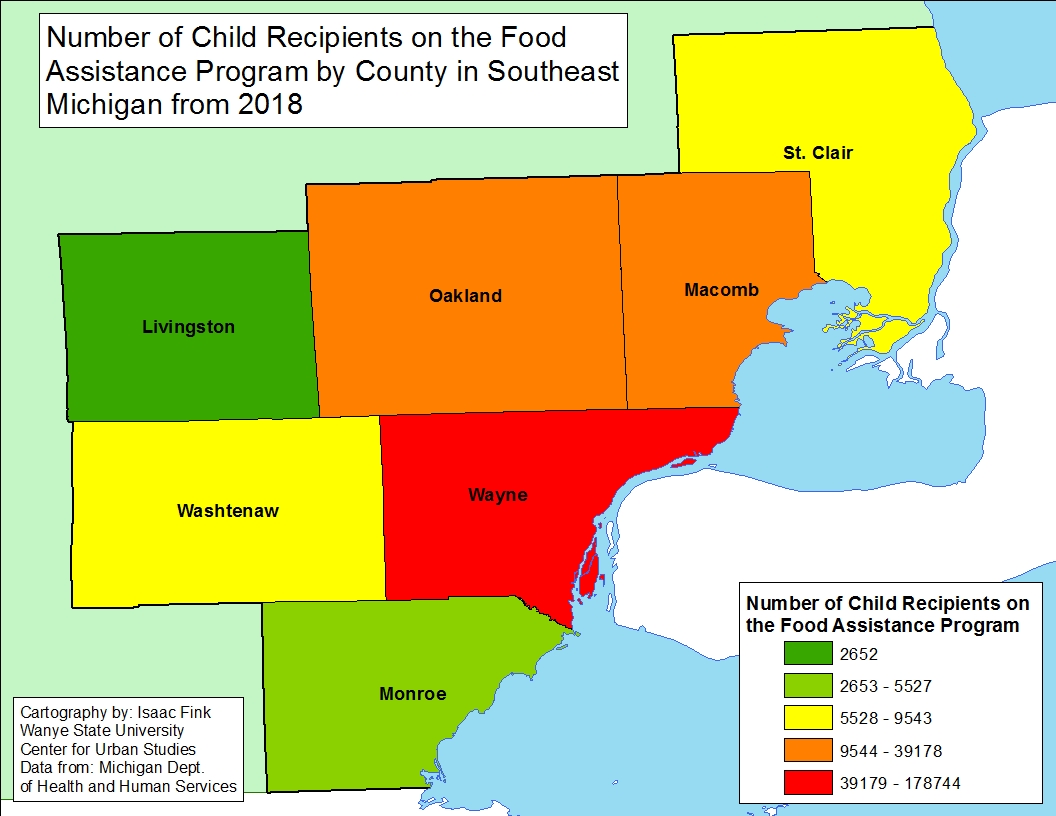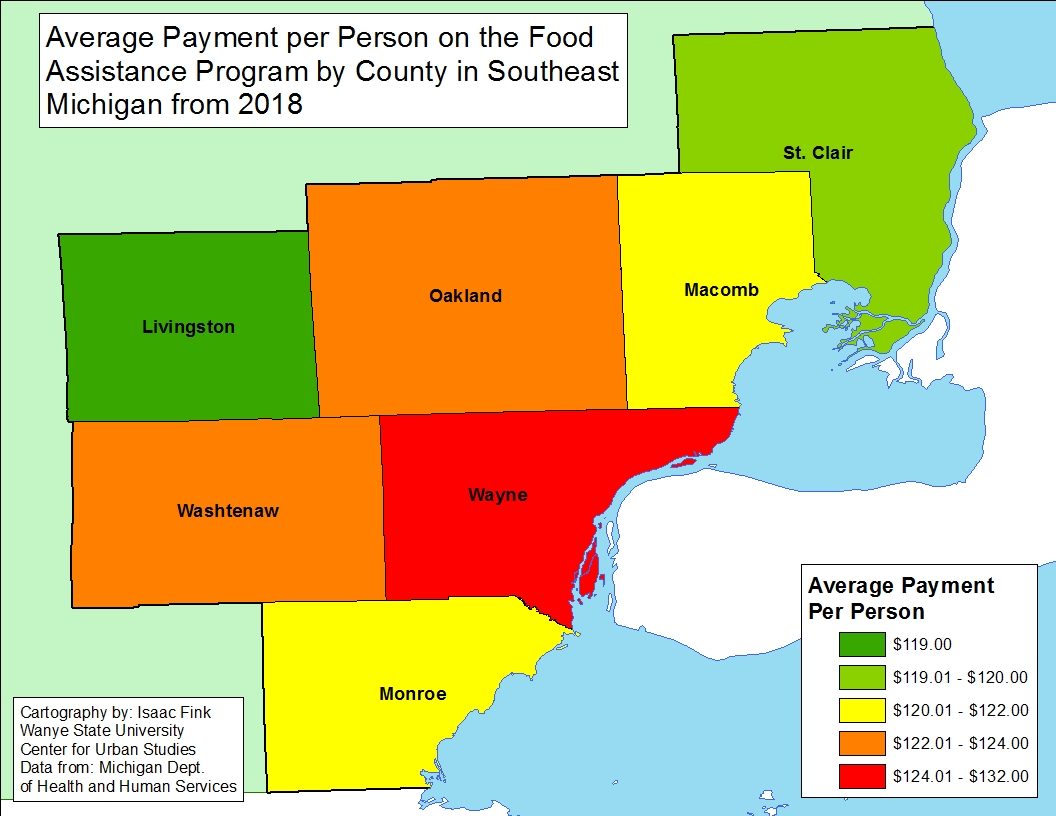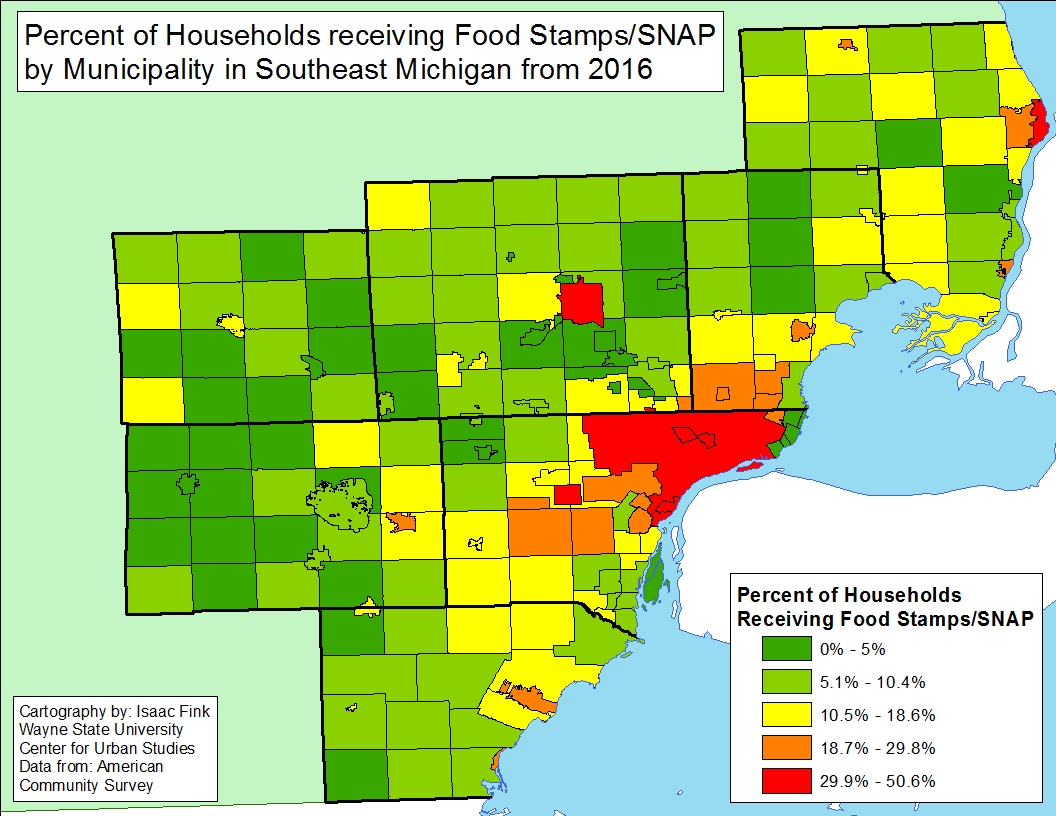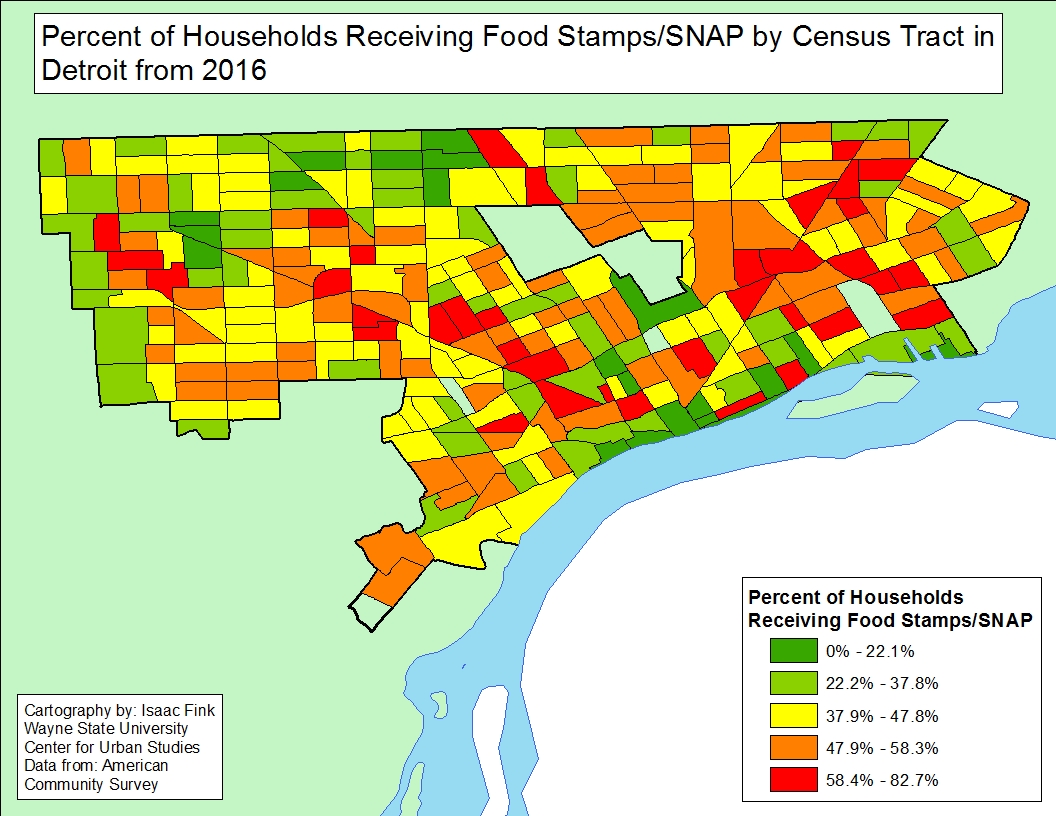While there are only 10 communities in Southeastern Michigan with more than 21 percent of the population 65 years of age or older, the number of communities with a growing elderly population is far greater than those with a declining elderly population. According to the data, majority of the rural communities throughout Southeastern Michigan-Monroe, Washtenaw, Livingston, St. Clair and northern Macomb and Oakland counties-have seen the greatest increases in a growing elderly population. Overall, St. Clair County’s elderly population grew the most between 2010 and 2016, with nine of the communities experiencing between 6 and 13 percent increases in the 65 years of age and older population. In St. Clair County, Algonac (21%), China Township (22%) and East China Township (26%) had the highest percentage of elderly residents in 2016. However, it was Lake Angelus, in northern Oakland County, that had the highest percentage of resident 65 years of age or older at 35 percent.
Detroit, and its inner and outer ring suburbs have the highest concentration of the aging population that is growing at a slower rate. As the second map below shows, majority of the Detroit suburbs did not experience a growth of the 65 years of age and older population above 2.5 percent between 2010 and 2016. In fact, some of those communities (Hamtramck, Grosse Pointe, Redford, Dearborn Heights) experienced an overall decline in the 65 years of age and older population between 2010 and 2016. In Detroit, the 65 years of age and older population only grew by 1.6 percent between 2010 and 2016. According to the data, in 2010 the elderly population was at 11 percent and by 2016 it grew to 12.6 percent. In Hamtramck, the 65 years of age population decreased from 9.1 percent in 2010 to 7.8 percent in 2016.
According to a recent Detroit Free Press article, by 2025 the number of people above the age of 65 will outnumber those 17 and younger. Nationally, such a growth of the elderly population isn’t expected to occur until 2035. There are varying reasons for the growth of the 65 years of age and older population locally, and nationally, including better medical advancements allowing people to live longer and the decline in birth rates over the year. One reason for what appears to be the quicker growth of the aging population in Michigan though is the fact that over about the last decade, particularly during the Great Recession, people have left to find jobs elsewhere. So, in short, out-migration has contributed to the fact that Michigan’s elderly population will outnumber its younger population within the next decade.


